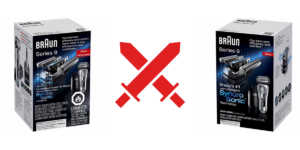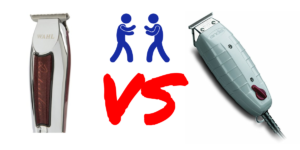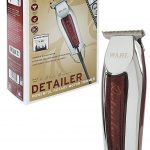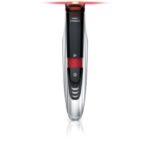How to Dye Your Beard Like a Pro
Some years back, there was a product sweeping the nation that promised users a new breath of fresh air on their thinning or graying hair. While this aerosol based spray can of hair dye was mercifully a short lived product, the memories of it live on even today; much like the famous vacuum hair clipper that was responsible for more botched haircuts than any well-meaning mother with a bowl and a pair of scissors.
Luckily, there are much more refined products for men who wish to dye their beards today, and not surprisingly, very few of them involve a spray can. What they do involve, however, is a confusing array of products and instructions on just how to dye a beard.
The lists of appropriate products will vary depending on exactly why you want to dye your beard. For some, it is a matter of covering gray. For others, it may involve matching the beard to dyed hair, or it could just be a case of your beard not quite matching your natural hair color. Sometimes, dying your beard can mask thinning areas or areas that aren’t growing out properly. No matter your reasons, read on for some tips that will teach you how to dye a beard like a pro.
Preparing Your Beard for the Dye
In order for your beard to be healthy and natural looking, you should take some preliminary steps before applying the color.
- Condition: Use your beard oil for a few days prior to applying the color. On the day you apply the color, make sure the beard is fresh and clean; do not use oils directly on the beard before you color unless they come as part of a dye kit. Condition your skin as well; if you are choosing chemicals, these can be very harsh to sensitive facial skin.
- Trim your beard prior to coloring it. Trimmed hair will “grab” the color more efficiently, and you will get longer lasting results by trimming the beard first, rather than dyeing it and then trimming it.
- Apply Vaseline or some type of protective barrier to the bare skin above and below your beard line to keep the color from staining your skin.
- Try a “patch” test before going all in. It is very rare that colors will come out looking as they do on the box; play it safe and try just a small spot somewhere inconspicuous.
Choose Your Approach
When trying to figure out how to dye your beard, you will most likely be overwhelmed by the sheer number of products out there. Here are a few approaches broken down as simplistically as possible.
- Temporary colors: Blackbeard for Men is an example of a temporary color choice; very temporary, at that. This particular choice, while it is waterproof, lasts about eight hours and may be a good choice for an event or social gathering; color without a drastic, permanent change. TYLB is also a temporary color choice that boasts a natural appearance and can be used daily.
- Permanent and Semi-Permanent Chemical Dyes: Just for Men would fall under this category, as will products like Godefroy that claim six weeks of color. Remember that as your beard grows out, you will need touch-ups on the roots just as you would with any hair color product.
- Gradual Coloring: Some products boast a very subtle color change. These are best for graying beards, and can include Touch of Gray.
- Natural Products: Many beard dyes are now boasting gentle and non-irritating ingredients such as Henna or other organic methods. Manly Guy is one such product, as is Grizzly Mountain.




Methods of Application
Most kits will give you everything you need in one box, including treatments to use before and after dyeing your beard. This will take guesswork out of how to dye your beard, and give you everything you need right at your fingertips. There are several ways to apply the dye, however.
- Gels: These are generally brush on kits. They are easy to use, with a no drip application that stays exactly where you apply it.
- Mixes: Some companies offer a base kit, with a choice of colors to mix into the base. This can be a way to mix the color exactly as you want to, without being stuck on a color that isn’t quite right.
- Liquid or Shampoos: Reparex is one type of this beard coloration method. These are liquids that come in a bottle and are applied or lathered into facial hair. They aren’t as easy to find, nor or they as easy to use, as the brush-in gels.
- Powders: This option is a powder that is mixed in water, than applied to the beard and mustache. Usually, these are organic dyes.
Considerations
Now that you know how to dye a beard, here are a few additional tidbits to consider.
- Don’t forget your eyebrows and sideburns: If you’re dyeing your beard, don’t forget to add some color to your eyebrows and sideburns.
- Don’t count on colors on the box: Many of the colors are meant to supplement colors you already naturally have in your facial hair, not replace them. Coloring over grey with one color will look completely different than coloring over white, or trying to change the color of your beard entirely.
- Consider starting two shades lighter than you think you will need: It is always easier to turn a lighter shade darker than it is to try to lighten a color once applied.
- Take into consideration the color you are covering: If your beard is brown and you are trying to lighten it, do your research. A blonde dye may turn your beard red, or give it reddish highlights. Likewise, do some reading before trying to lighten a black beard; the wrong color used there can have disastrous results.
- Condition your beard after coloring it: Dyeing will take a lot out of your healthy beard, and can leave it dry and unhealthy. Be sure to follow up daily with beard balms and oils to keep it healthy after you dye it.
Now that you know the basics of how to dye a beard, the choices should be a little easier to navigate. A simple Google search can take you to exactly the best choice for you, and luckily, Amazon has a huge selection of products for comparison.








